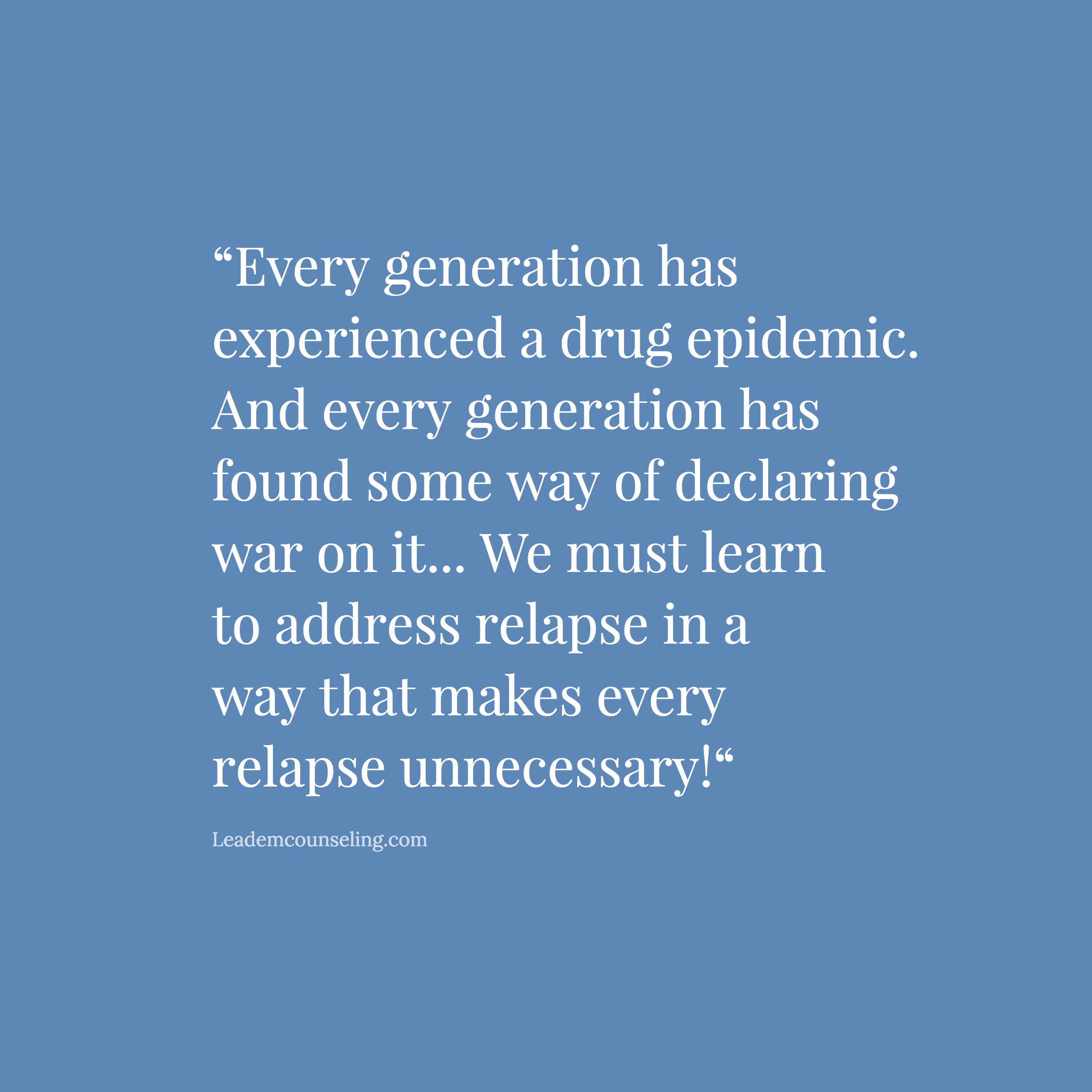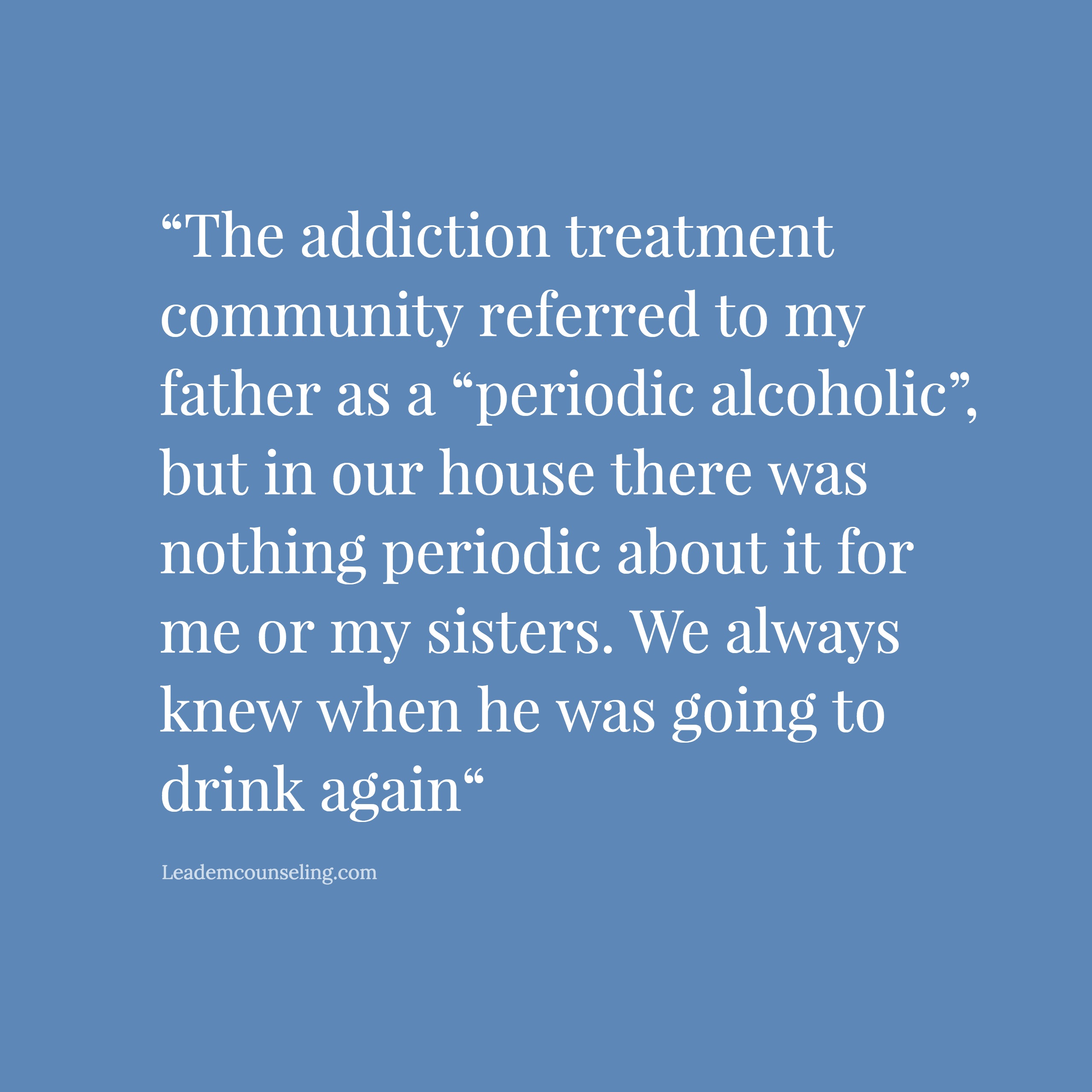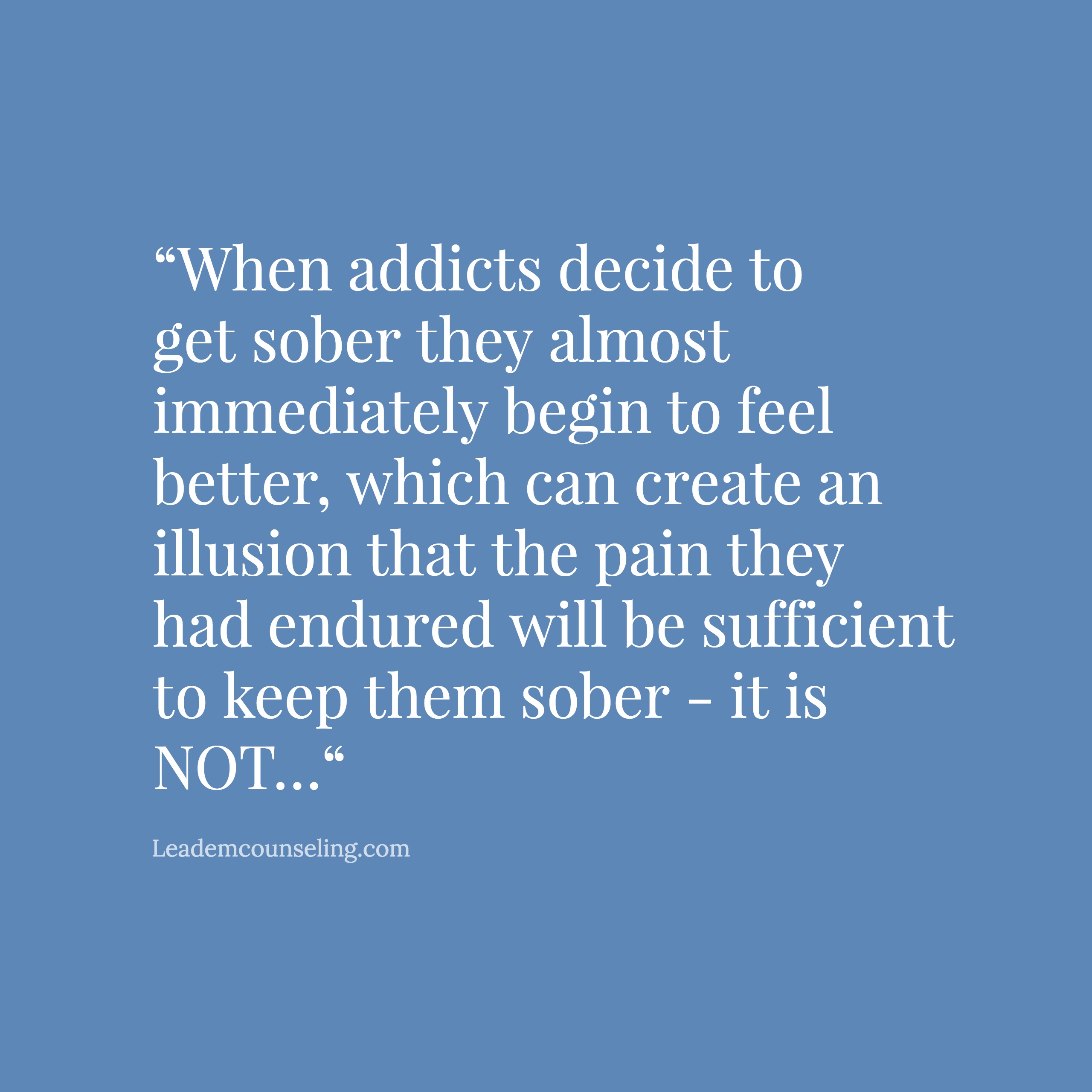Identifying the Stages of Relapse
Why Learning to Identify Relapse is Critical to Recovery
 When our social media consultant suggested that I write a blog on relapse prevention with the tagline “identify the stages of relapse” I was thrilled. The fact that consumers are searching the Internet with the phrase “identifying the stages of relapse” is like a dream come true. Well maybe not a dream, but it’s a beginning. If consumers of addiction treatment services are concerned with relapse prevention it is a really good thing because it might inspire treatment providers to begin to look at relapse as a process and develop treatment objectives that will help end users to intervene on relapse during any stage in the process. Just so you know “a dream come true” would involve the adoption of a model that begins to address relapse prevention at the time of admission for all admissions and not just those identified as chronic relapsers and does so in a client-driven rather than program-driven design so treatment plans are highly individualized. That would be the fulfillment of one of my life’s most passionate dreams. But I am starting to sound like an “old guy” so I better get back to the title, or at least try because Shawn will think I am wandering off.
When our social media consultant suggested that I write a blog on relapse prevention with the tagline “identify the stages of relapse” I was thrilled. The fact that consumers are searching the Internet with the phrase “identifying the stages of relapse” is like a dream come true. Well maybe not a dream, but it’s a beginning. If consumers of addiction treatment services are concerned with relapse prevention it is a really good thing because it might inspire treatment providers to begin to look at relapse as a process and develop treatment objectives that will help end users to intervene on relapse during any stage in the process. Just so you know “a dream come true” would involve the adoption of a model that begins to address relapse prevention at the time of admission for all admissions and not just those identified as chronic relapsers and does so in a client-driven rather than program-driven design so treatment plans are highly individualized. That would be the fulfillment of one of my life’s most passionate dreams. But I am starting to sound like an “old guy” so I better get back to the title, or at least try because Shawn will think I am wandering off.
If you tune into the mainstream community-focused print, radio and television advertising you will see a huge effort being made to raise social consciousness alarms about the drug epidemic sweeping through our nation’s neighborhoods. In New Jersey, our outgoing governor[1] is involved in a wide array of efforts through a Facing Addiction Taskforce, which is designed to get the word out there that addiction is a disease and that help and hope is available. I am privileged to have lived and remained sober long enough to see the veil of shame and secrecy surrounding addiction being torn down in many cultures. I am thrilled that public awareness is growing and that communities are beginning to speak in terms of hope about the prospect of addicts and their families being able to climb out from beneath the rubble of addiction. More people then ever before understand that addiction is a treatable illness and that those afflicted with it can and do stay sober.
The Epidemic Issue
 Use of the term epidemic in relationship to our current crisis is neither an overstatement nor a sensational way of making a headline — it is real. But it is not new. The problems associated with untreated and under-treated addiction have been at epidemic proportions for at least the 47 years that I have been sober. We, as a society, have finally become more honest about how bad it is. If you were growing up in the early 60’s and your parents and most of your friend’s parents seemed to live at the local bar it felt like an epidemic. If your neighborhood teenagers were found dead from an alcohol overdose in a cemetery where the party was held the night before or frozen in a snow drift with alcohol poisoning it felt like an epidemic in the 70’s. If your daughter was date raped after attending a “designer drug” party in the 80’s or your son overdosed at a fraternity hazing event in the 90’s it certainly felt like an epidemic. Every generation has experienced a drug epidemic. And every generation has found some way of declaring war on it. But we are still missing the point. Shooting cannons stuffed with political confetti at the sellers and the buyers is really not the answer. And since it is not likely that we will see treatment on demand any time soon, we need to find another way of stemming the tide. We think that the strategy should be to address relapse in a way that makes every relapse unnecessary and every person remaining sober a greater testimony to those who are struggling with addiction than all the “Just Say No” ads you could fit into the Super Bowl advertising agenda.
Use of the term epidemic in relationship to our current crisis is neither an overstatement nor a sensational way of making a headline — it is real. But it is not new. The problems associated with untreated and under-treated addiction have been at epidemic proportions for at least the 47 years that I have been sober. We, as a society, have finally become more honest about how bad it is. If you were growing up in the early 60’s and your parents and most of your friend’s parents seemed to live at the local bar it felt like an epidemic. If your neighborhood teenagers were found dead from an alcohol overdose in a cemetery where the party was held the night before or frozen in a snow drift with alcohol poisoning it felt like an epidemic in the 70’s. If your daughter was date raped after attending a “designer drug” party in the 80’s or your son overdosed at a fraternity hazing event in the 90’s it certainly felt like an epidemic. Every generation has experienced a drug epidemic. And every generation has found some way of declaring war on it. But we are still missing the point. Shooting cannons stuffed with political confetti at the sellers and the buyers is really not the answer. And since it is not likely that we will see treatment on demand any time soon, we need to find another way of stemming the tide. We think that the strategy should be to address relapse in a way that makes every relapse unnecessary and every person remaining sober a greater testimony to those who are struggling with addiction than all the “Just Say No” ads you could fit into the Super Bowl advertising agenda.
The Process of Relapse
I have been working for the past 45 years to bring the lessons of hope that I learned while working for a half-way house for chronic alcoholics in the early 70’s. The insights that I acquired while working with those fine men have contributed more to my clinical understanding of addiction and therapeutic intervention than all of the hours spent achieving my graduate degrees. We worked side by side to unravel the mysteries they had previously associated with their relapse patterns that had claimed anywhere from 15 to 30 years of their lives depending on which man’s story arc was under examination. When I began work at the house there were no successful discharges from treatment. In fact most men left the facility in handcuffs. It was a very challenging population to work with but not because of their lack of acceptance of the need for help or the shallowness of their bottoms. The men had sufficient motivation and their “bottoms” were all pretty low and dictated by the admission requirements. In order to be admitted to the facility a man had to have served a state prison sentence, been classified as unemployable, had previous treatment failures and no familial support and currently dependent on welfare.
Our work together began in earnest after two of the men died within weeks of each other. A man we will call Grand Jack would relapse every time he had accumulated $1000 in his savings account. Jack was pronounced dead at the scene of his pedestrian collision with a truck on Route 22 following a night of drinking. Jack had previously spoke of his concern about accumulating too much money but had no idea what the emotional antecedents to his ill-spent hoard were that might have warned him of the coming relapse. He would not look deeper at the emotional distress which preceded his repeated relapses. He and his support group usually explained his failures with the superficial explanation that he was driven to “sabotage his success”. The second man, Homesick Willy, was pulled from the burning car he had spent the night drinking in after his attempts to reunite with his wife and children were met with a painful rejection. These two men wanted more from their lives but did not know how to remain sober long enough to acquire it.
The men who remained at the house mourned the loss of their friends in a private memorial we held in the group room and resolved to analyze the relapses that each had endured in order to learn what drove their patterns of failure. We met for many hours that night and during all the free time the group had in the weeks that followed the unnecessary deaths of Jack and Willy. Each of them were beginning to understand what I had learned as a child — relapse is a process.
“Periodic” Alcoholism
 In the early 60’s the medical and addiction treatment community referred to my father as a “periodic alcoholic” but in our house there was nothing periodic about it for me or my sisters. We always knew when he was going to drink again. We all felt the moods shifting in the house almost as clearly as the dramatic shifting of tectonic plates during an earth quake. I suspect we knew when Dad was going to drink again well before the desire to drink appeared in his consciousness. Some of us were more tuned into the process than others but for me the seismic changes were perceptible by age eight. I could tell by the way he aggressively shaved in the morning generally cutting himself or by the way that he began to distance himself from each of us. There was nothing periodic about my father’s drinking. As we saw it he was either getting drunk, being drunk or coming off a drunk. When he was getting drunk we were afraid. When he was drunk we were trying to find a place to hide. When he was coming off a drunk we were trying to figure out how we could prevent him from pouring the next drink.
In the early 60’s the medical and addiction treatment community referred to my father as a “periodic alcoholic” but in our house there was nothing periodic about it for me or my sisters. We always knew when he was going to drink again. We all felt the moods shifting in the house almost as clearly as the dramatic shifting of tectonic plates during an earth quake. I suspect we knew when Dad was going to drink again well before the desire to drink appeared in his consciousness. Some of us were more tuned into the process than others but for me the seismic changes were perceptible by age eight. I could tell by the way he aggressively shaved in the morning generally cutting himself or by the way that he began to distance himself from each of us. There was nothing periodic about my father’s drinking. As we saw it he was either getting drunk, being drunk or coming off a drunk. When he was getting drunk we were afraid. When he was drunk we were trying to find a place to hide. When he was coming off a drunk we were trying to figure out how we could prevent him from pouring the next drink.
Recovery from Relapse
 The men in the half-way house, whose stories were very similar to my father’s, were beginning to see the precursors to their past relapses within three weeks of the start of our excavation work. There was a freedom that seemed to come in each of them as they began to unscramble the puzzle. They began to understand that if we could see a relapse coming in past debacles then there was no mystery.
The men in the half-way house, whose stories were very similar to my father’s, were beginning to see the precursors to their past relapses within three weeks of the start of our excavation work. There was a freedom that seemed to come in each of them as they began to unscramble the puzzle. They began to understand that if we could see a relapse coming in past debacles then there was no mystery.
One by one the men learned what I hope will one day become a recovery axiom: relapse is a process and not an event and as such can be identified, intervened on and prevented. If you have been following these blog articles you might be growing tired of reading that line. I hope you stick with us and spread the word because treatment providers, pastors, addicts and their grandmothers need to learn it. And besides that, I will not stop saying it. I have seen too many people get clean and sober, relapse and later die from the consequences of under-treated addiction.
Why Do We Relapse?
 Those men learned a great deal about how to recover from relapse by a soul searching examination of the the emotional antecedents to each of the relapses that they could remember. We framed out a phasic model for understanding the progressive deterioration that inexorably ended in a return to one’s drug of choice if not interrupted. Men began to leave the program sober and free from the shame of chronic relapse as a result of their willingness to examine the flaws in the strategies that they used to cope with life and the challenges it brings.
Those men learned a great deal about how to recover from relapse by a soul searching examination of the the emotional antecedents to each of the relapses that they could remember. We framed out a phasic model for understanding the progressive deterioration that inexorably ended in a return to one’s drug of choice if not interrupted. Men began to leave the program sober and free from the shame of chronic relapse as a result of their willingness to examine the flaws in the strategies that they used to cope with life and the challenges it brings.
Jack did not relapse because he was destined to sabotage his success. He died because his economic success lured him into the misperception that he had “kicked the booze habit”. And when he felt victorious he stopped making the changes in himself that had enabled him to establish economic security. Willy did not die because of his unrequited love but because he did not address the pain of that loss and secure the sober relationships that could begin to fill the void in his life. When addicts hit some sort of bottom and decide to get sober they almost immediately begin to feel better and an illusion is created that the pain they had endured prior to recovery will be sufficient to keep them sober or once sober they will regain exactly what they lost.
Looking to the Future
I promised that those lives would not been lost in vain after meeting with Willy’s teenage son about a year after accepting a position in a residential treatment facility in the same region. Willy’s son became a patient at that facility and his greatest pain was not related to the horrors of his own addiction but the hurt he felt that his father was not around to see him finally getting sober for he had mocked his Dad’s attempts to reunite the family in an effort to avoid having to address his own addiction. I was blessed to help his son’ learn from the lessons his Dad taught the rest of us.
If you are ready to join us in the mission please consider attending our training in May, 2018 or contact our office for more information about what we are doing at LCCS to shine the Beacon of Hope to addicts and their families.
See our book: An Ounce of Prevention: A Course in Relapse Prevention
Related Article(s): The Process of Relapse Recovery and How to Commit Yourself to Sober Living
How to Avoid Relapse? How to Put a Relapse Prevention Technique Into Action
What is Relapse? What is Relapse Prevention?
About the Authors
 Both John and Shawn Leadem are Licensed Clinical Social Workers in private practice in Toms River, New Jersey.
Both John and Shawn Leadem are Licensed Clinical Social Workers in private practice in Toms River, New Jersey.
John has recently celebrated his 45th year in recovery and believes that “service to others is the cornerstone of spiritual maturity.” His professional service to addicted individuals and their families has included the development and direction of addiction treatment services in a full array of modalities from half-way houses to large residential treatment facilities over the past 44 years.
Shawn’s lifelong exposure to the recovery culture and his personal recovery experience has left him with a deep personal empathy for the social and emotional suffering endured by others and a strong faith in a person’s ability to change. He has received his certification as a Sexual Addiction Therapist and as a Multiple Addictions Therapist by the International Institute for Trauma & Addiction Professionals.
Together, John and Shawn have co-authored and brought their unique treatment model of relapse prevention, An Ounce of Prevention: A Course in Relapse Prevention, to residential treatment centers across the United States, they have trained therapists at numerous national and international conferences, and most recently have trained many EAP programs associated with many State Unions.
Copyright, John Leadem & Shawn Leadem, 2018
You are free to copy this article for future reference, to post it on other web sites and to share it with family or friends. If you would like to have permission to include it in a publication of your own you can request written permission by contacting the authors at www.leademcounseling.com.
[1] “Newsroom.” ReachNJ – State of New Jersey: Facing Addiction Taskforce, reachnj.gov/news.shtml.
[apss-share networks="facebook, twitter, google-plus, pinterest, linkedin" counter="0" total_counter="0" http_count="1"]







No Comments Yet | Post Comment
You can be the first to comment!
Leave a comment